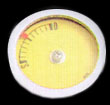 |
Step 1
A fixed volume of water is allowed to enter the mixing tube for
use in diluting the pulp sample to 0.1% consistency. |
|
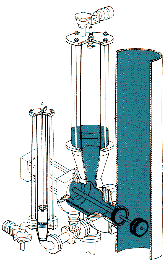 |
Step 2
A fixed volume of pulp (200cc) is removed from either the stock
line or tank. |
|
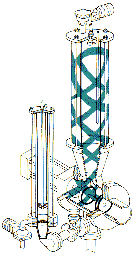 |
Step 3
Vigorous stirring and mixing is accomplished with compressed air
to ensure a uniform mixture at 0.1% consistency. |
|
 |
Step 4
There is a short pause to allow air to escape from the low consistency
mixture |
|
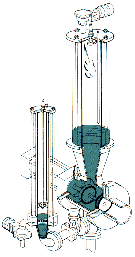 |
Step 5
By applying a constant air pressure to the mixing tube, the mixture
is forced through the screen forming a uniform pulp mat. Excess
water is drained externally. |
|
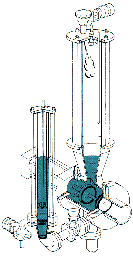 |
Step 6
After a uniform pulp mat has been formed, the external drain valve
closes and water begins filling the measuring tube. |
|
 |
Step 7
After a preset fixed time, the communicating valve between the two
tubes closes and the water volume (height) collected in the measuring
tube is measured by the bubbler tube. Back pressure to a differential
pressure transmitter sends a low amperage signal to a recorder or
computer. This signal correlates to the pulp sample freeness. |
|
 |
Step 8
After the freeness measurement has been completed, all valves open
and the unit is thoroughly washed with high velocity water nozzles.
Washing water is drained externally.
Note: This complete washing eliminates frequent wire cleaning, which
is recommended for the Koei Freeness Tester only twice a year. |




